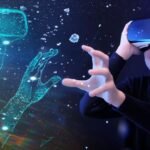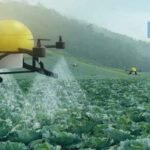National Robotarium pioneers AI and telepresence robotic tech for remote health consultations
The National Robotarium, based at Heriot-Watt University in Edinburgh, has introduced an AI-powered telepresence robotic solution designed for remote health consultations. This solution enables healthcare practitioners to assess a person’s physical and cognitive health from anywhere in the world, allowing patients to access specialists regardless of their location, be it in the UK, India, the US, or elsewhere.
The project is part of the National Robotarium’s assisted living lab, which focuses on enhancing the lives of individuals living with various conditions. Dr. Mario Parra Rodriguez, an expert in cognitive assessment from the University of Strathclyde involved in the project, believes that the solution will enable more regular monitoring and health assessments, which are crucial for individuals living with conditions like Alzheimer’s disease and other cognitive impairments.
The research, led by Dr. Mauro Dragone, utilizes machine learning and artificial intelligence techniques to monitor smart home sensors and analyze daily activities. The system assesses an older person’s cognitive abilities and independence non-intrusively. By integrating the system with a telepresence robot, the project achieves two significant advancements. Firstly, the robot can be equipped with powerful sensors and operate in a semi-autonomous mode, providing quality data continuously. Secondly, clinicians and caregivers can control the robot remotely, allowing them to interact with the individual under their care, conduct assessments, respond to emergencies, and provide assistance as needed.
The National Robotarium’s telepresence robotic solution has the potential to revolutionize healthcare and assisted living, enabling remote consultations and improving the quality of care for individuals with various conditions. The project has received £21 million in funding from the UK Government City Region Deal, which contributes to the growth of the robotics and AI sector, creating jobs and attracting investment to the area.
In other healthcare news, the National Institute for Health and Care Research (NIHR) is investing over £1 million to develop a new technology called Organ Quality Assessment (OrQA) that uses artificial intelligence and facial recognition techniques to evaluate the quality of organs for transplantation. OrQA aims to provide surgeons with a non-intrusive assessment of organ health to determine their suitability for transplantation. This technology has the potential to increase the number of kidney and liver transplants performed in the UK, benefiting up to 200 kidney patients and 100 liver patients annually.
The project involves collaboration between the University of Bradford, the University of Oxford, the University of New South Wales, NHS Blood and Transplant (NHSBT), and the Quality in Organ Donation biobank. It aims to deliver research for the NHS, with the goal of making more informed decisions about organ usage and improving the organ transplant process. The software developed for OrQA utilizes deep machine learning algorithms trained on thousands of images of human organs, enabling surgeons to quickly assess donated organs and determine the best course of action.
The OrQA software is currently at the proof-of-concept stage, with liver, kidney, and pancreas transplantation being the focus of initial work. The project aims to conduct a licensing study within the NHS within the next two years, potentially leading to its adoption within the healthcare system and saving and improving more lives through efficient organ transplantation.


































